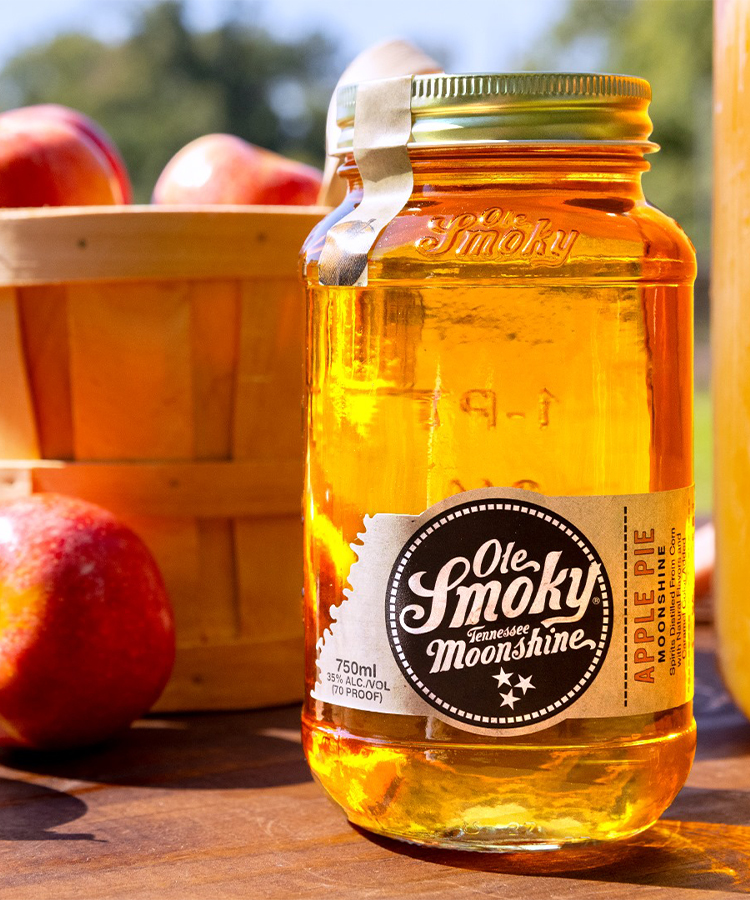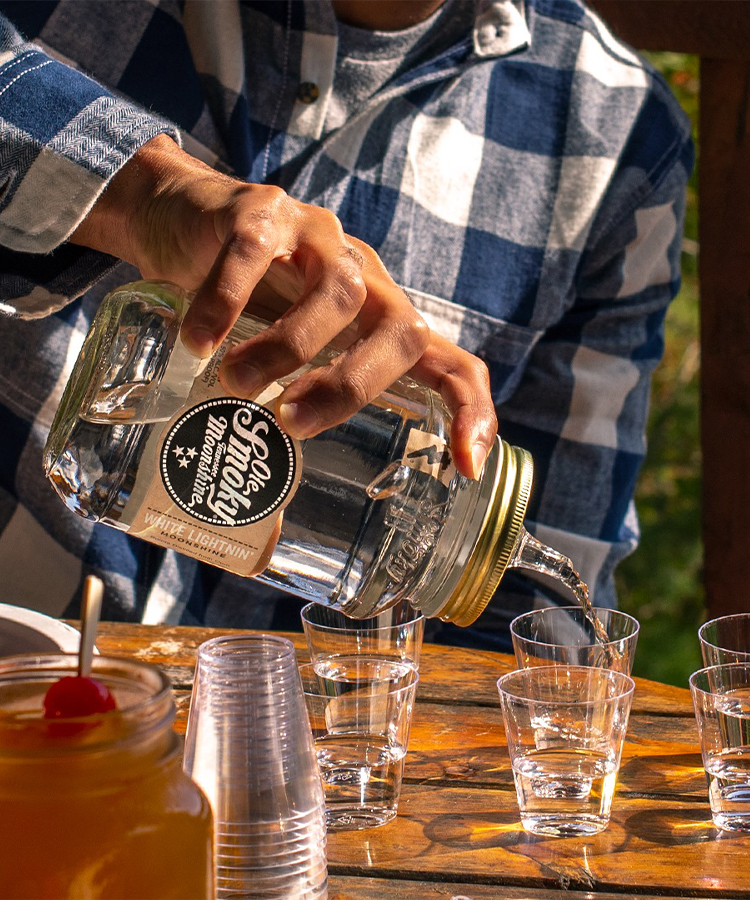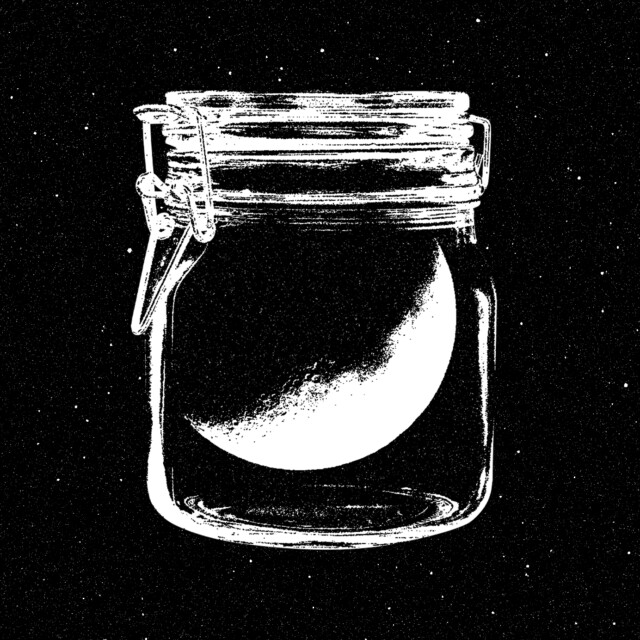Moonshine has generally held a less-than-respectable reputation through the years. The word conjures up images of stills hidden deep in the woods and extremely potent alcohol in wide-mouthed jars that make men blind. But like most myths, the reality of moonshine is far more intriguing than the legend.
Technically, the term “moonshine” is not a catch-all for any liquor produced illegally. But unlike spirits like whiskey and vodka, there’s no regulatory description of what exactly constitutes moonshine. Rather, it refers to a clear, unaged spirit, and in the United States, that spirit is generally corn-based, according to Ole Smoky, the first federally licensed distillery in East Tennessee.
Although it is intrinsically tied to the United States, our nation is not the birthplace of the illicit beverage. The United Kingdom had been making moonshine for centuries — usually out of barley — and Scottish and Irish immigrants brought the practice to the southeastern U.S. during the 18th century.
For Americans, moonshine is simply a part of the country’s culture. It speaks to our independent and defiant spirit, as farmers and distillers worked to avoid being taxed in the 1790s during the Whiskey Rebellion, and as a way to skirt around Prohibition in the 1920s. For those in the Appalachian region, it’s a historical rite of passage continued on through generations and family recipes.

“I’m from Virginia near the Blue Ridge Mountains, so the first time I ever had moonshine, it was homemade,” recalls Caleb Elder, who has been a bartender at Ole Smoky’s Nashville distillery since 2019 and the cocktail demonstrator for the company’s Instagram videos. “My dad had a guy that would make it for him at work and it was stored in an old pickle jar, labeled with really bad handwriting and three X’s written in Sharpie on top. But it was so smooth.”
Elder, and his effervescent passion for moonshine, sat down with VinePair to share his professional and personal knowledge on how best to appreciate and enjoy this understated spirit.
Drinking Moonshine Straight and as a Substitution
It’s that characteristic (if unexpected) smoothness that draws in first-time moonshine drinkers. “If you want to try the spirit just as it is and you’re drinking it straight, I always recommend pouring it over ice,” Elder says “In fact, I keep my bottles on ice when I do my tastings.”
The pure, straightforward taste of unflavored moonshine makes it incredibly versatile when it comes to cocktails, especially as a substitute for other alcohols. “It is comparable to vodka so the next time you’re going to do a vodka cranberry or vodka soda, try moonshine instead,” Elder suggests. Another of his favorites is to update the Bloody Mary by using 2 ounces of moonshine over 12 ounces of ice and Bloody Mary mix before straining it and topping it with more moonshine-soaked vegetables. To easily make your own, Elder says, drain and save the liquid from a pickle jar, keeping the pickles in the jar, then fill the jar up halfway with moonshine before topping up with the pickle juice. For a kick, add a few dashes of hot sauce before closing, shaking, and letting sit in the refrigerator for a few hours to marinate.
While moonshine’s reputation may not have made it a natural substitution for stirred, spirit-forward cocktails previously, it would be a shame to not think of it as such now. “I tell people that moonshine makes the best ‘backyard cocktail,’” Elder says. “You can dress them up, you can dress them down, you can go as simple as you want.” This includes drinks like the Martini or Negroni, he adds, though the key is opting for a moonshine that has lost much of its corn flavor through multiple distillations.

Historically, one of the most enticing aspects of crafting moonshine was its relative simplicity and speed to make, which remains largely true to this day. Since the liquor isn’t aged, batches can be turned around in a matter of days without the need for barrels and storage facilities (hence less chance of gaining the attention of the police and tax collectors). But just because it’s quick doesn’t mean it’s easy. Without the ability to rely on time and barrels, achieving the right flavor profile is an art. Ole Smoky, for instance, can distill its base alcohol more than six times to reach the right level of purity before combining it with other flavors.
Amping Up the Flavor With Infusions and Mixers
Another distinct characteristic of moonshine is that it’s just as iconic as a pure liquor as it is infused with flavor. “Traditionally,” explains Elder, “if you were making moonshine at home, you would throw peaches, orange peels, strawberries — whatever you had available to you — and let it sit to infuse the liquid for months.”
For distillers now crafting legal hooch, the sky’s the limit for creating unique flavors. Classic, fruit-infused versions are also Elder’s go-to when it comes to cocktail creation. “I love making blackberry lemonade,” he says, recommending 2 ounces each of blackberry moonshine and lemonade, topped with lemon-lime soda in a highball glass. Elder also suggests using blackberry moonshine for a twist on a mule. “Ginger ale goes incredibly well with moonshine, so I try to combine them whenever I can,” he says.
Above all, moonshine’s appeal lies in its simplicity. It’s easy to combine with a few other ingredients and enjoy. It also provides a great base for classic cocktails. But as much as moonshine has skated over onto the legal side of the law, its roots remain the same. “Open up the jar and pass it around the fire,” says Elder.
That’s how you drink moonshine.
